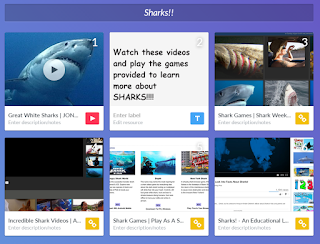BlendSpace
https://www.tes.com/lessons?redirect-bs=1

BlendSpace uses all three domains of learning-cognitive, affective, and psychomotor (the cognitive domain is a given, but the other two can be used when teaching a student a particular task). BlendSpace promotes the following learning experiences: direct purposeful experiences, contrived experiences, dramatized experience, demonstrations, educational television, motion pictures, recording and still pictures, visual symbols, and verbal symbols.

BlendSpace uses all three domains of learning-cognitive, affective, and psychomotor (the cognitive domain is a given, but the other two can be used when teaching a student a particular task). BlendSpace promotes the following learning experiences: direct purposeful experiences, contrived experiences, dramatized experience, demonstrations, educational television, motion pictures, recording and still pictures, visual symbols, and verbal symbols.
Instagram
Instagram
uses the affective domain of learning.
Instagram also promotes the following learning experiences:
demonstrations, motion pictures, recording and still pictures, visual symbols,
and verbal symbols.
Storybird
Storybird
uses all three domains of learning-cognitive, affective, and psychomotor. It also promotes the following learning
experiences: direct purposeful experiences,
contrived experiences, dramatized experience, demonstrations, educational
television, motion pictures, recording and still pictures, visual symbols, and
verbal symbols.
Quizlet
Quizlet
uses all three domains of learning-cognitive, affective, and psychomotor. It also promotes the following learning
experiences: direct purposeful experiences, contrived experiences, demonstrations,
visual symbols, and verbal symbols (text).
Simple
Diagrams
Simple
Diagrams can be used for the cognitive and affective domains of learning. SD
also promotes direct purposeful experiences, contrived experiences, demonstrations,
recording and still pictures, visual symbols, and verbal symbols.








No comments:
Post a Comment